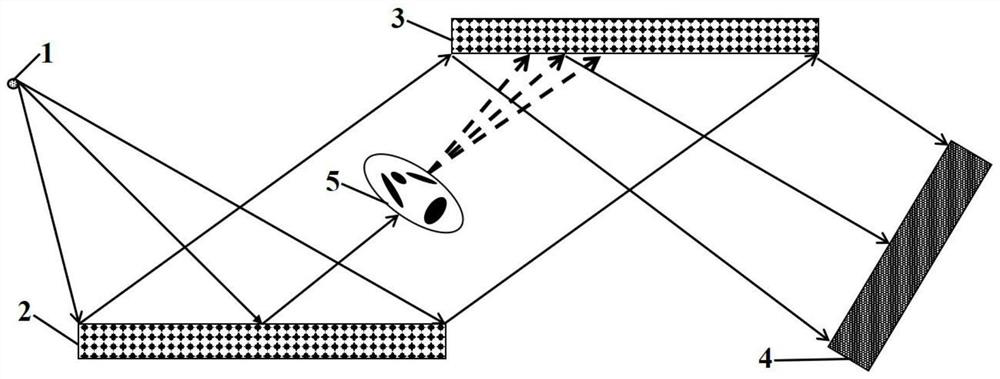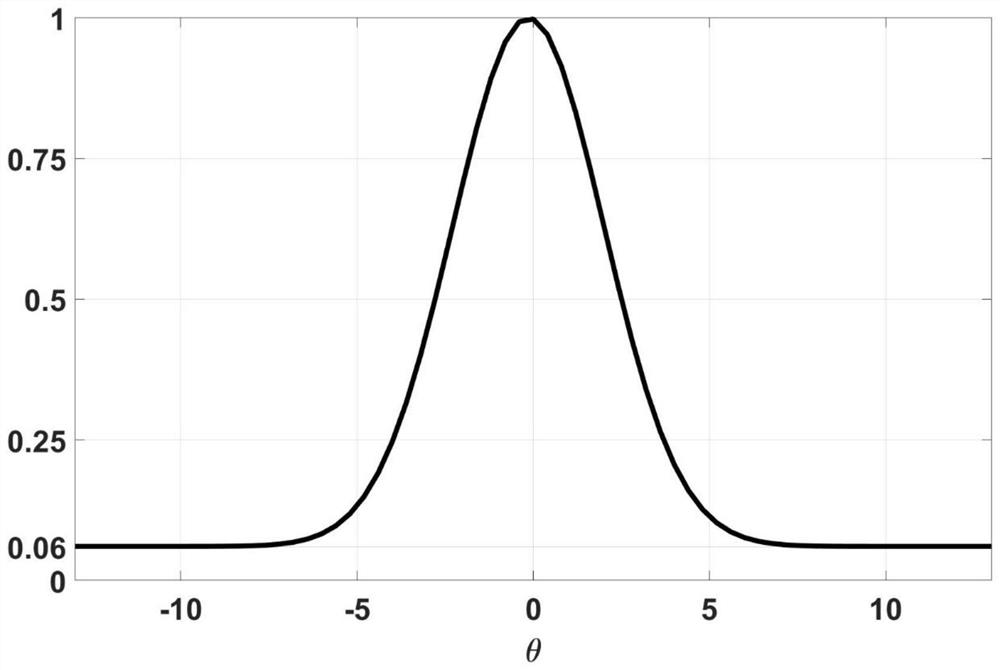An X-ray Diffraction Enhanced Imaging Method Based on Iterative Algorithm
A technology of enhanced imaging and iterative algorithm, applied in the field of X-ray imaging, can solve the problems of long data acquisition time, reduced experimental efficiency, inability to accurately extract refraction signals and scattering signals, etc., to reduce the risk of radiation damage, simplify the data acquisition process, Avoid the effects of multiple exposures
- Summary
- Abstract
- Description
- Claims
- Application Information
AI Technical Summary
Problems solved by technology
Method used
Image
Examples
Embodiment Construction
[0065] In this example, see figure 1 , setting an X-ray diffraction enhanced imaging system composed of X-ray source 1, monochromatic crystal 2, analysis crystal 3 and detector 4; as figure 1 As shown, the X-ray propagation direction is the Z axis; the X-ray source 1, the monochromatic crystal 2, the imaged object 5, the analysis crystal 3 and the detector 4 are arranged in sequence along the Z axis; then the X-ray based on the iterative algorithm The ray diffraction enhanced imaging method is carried out as follows:
[0066] Step 1. Set the relative position of each device, satisfying: 01 3 4 , where d 1 is the relative distance between the monochromatic crystal 2 and the X-ray source 1 along the Z axis, d 3 To analyze the relative distance between the crystal 3 and the X-ray source 1 along the Z axis; d 4 is the relative distance between the detector 4 and the X-ray source 1 along the Z-axis;
[0067] Step 2. Obtain background projection data:
[0068] Step 2.1, taking ...
PUM
 Login to View More
Login to View More Abstract
Description
Claims
Application Information
 Login to View More
Login to View More - Generate Ideas
- Intellectual Property
- Life Sciences
- Materials
- Tech Scout
- Unparalleled Data Quality
- Higher Quality Content
- 60% Fewer Hallucinations
Browse by: Latest US Patents, China's latest patents, Technical Efficacy Thesaurus, Application Domain, Technology Topic, Popular Technical Reports.
© 2025 PatSnap. All rights reserved.Legal|Privacy policy|Modern Slavery Act Transparency Statement|Sitemap|About US| Contact US: help@patsnap.com



